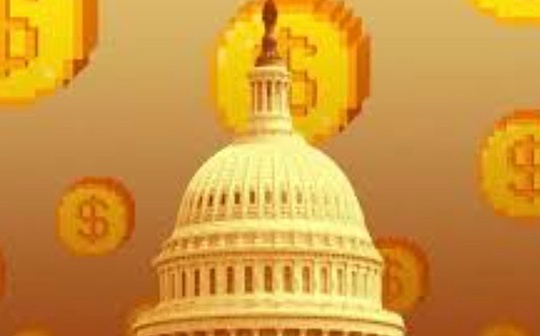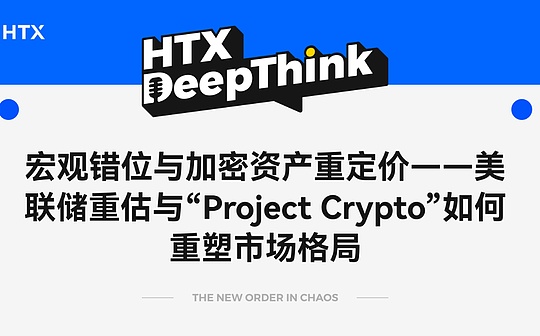
Author: luke Song, Sam, Li Zhongzhen, Pang Meimei
Recently, the U.S. House of Representatives passed three draft legislation on crypto-regulation with an overwhelmingly favorable vote, namely the Genius Act, the Clear Act and the Anti-CBDC Monitoring National Act, among which the Genius Act is called “Consolidate the United States globallygoldmeltAn important step toward the dominance of encryption technologyThe bill was officially signed and implemented by Trump on the 18th, and has also been reported by domestic CCTV, finance and other media.
In this issue, we raised five questions to outstanding members of the Web3 Compliance Research Group: “What should the Genius Act do?”, “How to understand the regulatory division of SEC and CFTC in the Clear Act?”, “Why is the United States anti-CBDC?”, “Will the three bills trigger references from other countries in crypto supervision?”, “How will they affect the operation of crypto startup projects?”
Next, let’s get to the topic.
Q1: Can you tell me in plain words what the Genius Act needs to do?Do stablecoins outside the United States still have competitive opportunities?
Luke:
In short, the U.S. government has formulated a strict legal framework for stablecoins (such as USDT and USDC) and its issuers.The definition of stablecoins is clarified to make stablecoins legally recognized.This is used to protect the rights and interests of both issuers and consumers using stablecoins.
The main part is three parts.
First, the bill defines stablecoins as ‘payment stablecoins’.It is clearly stated that stablecoins do not have securities or commodity attributes.This means that stablecoins themselves do not have investment value-added attributes.
Second, stablecoin issuers have strictly formulated a 1:1 high liquidity method to manage the principal of stablecoin exchanged by consumers.And the account book must be disclosed every month to ensure its 1:1 high liquidity.Moreover, if the market value of stablecoin issuing companies reaches more than $50 billion, they must submit an audit report every year to accept dual supervision from state and federal regulations to prevent a “decoupling” crash like Terra/Luna.
The third is to show that if the company that issues stablecoins goes bankrupt, the user’s money has the right to pay first, which is equivalent to giving the user a bottom line.There are also requirements such as anti-money laundering (AML), identity verification (KYC), etc., which are similar to banks, ensuring transparent transactions and not allowing bad people to take advantage of loopholes.
Sam:
The Genius Act is to regulate the issuance and transactions of stablecoins, andIt’s very strict at the moment.It requires that stablecoins that want to issue or circulation in North America must obtain a federal or state license, such as obtaining a formal bank or regulated financial institution qualification.This means that if you want to continue to do the stablecoin business, you must be able to fully prepare, disclose information and AML compliance.
This wave is entirely aimed at TEDA. Currently, TEDA’s market value is around 1,600. There is a risk of bursting in the first two rounds of industry cycles, mainly focusing on the opaque reserves of TEDA and wearing the same pair of pants for audits. TEDA is often ridiculed by industry insiders. The annual KPI is to speculate on its own bursting and then recover chips at a low price.
Moreover, as the leader of stablecoins, TEDA accounts for more than 70% of the stablecoin market. It seems that such unstable stablecoins can be made into this scale. There must be some consortiums who are jealous of it. However, if a consortium wants to enter the market, it must first design market rules so that they can get legal benefits. Therefore, the essence of the Genius Act is to give new players or Old money tickets.
The essence of stablecoins outside North America is the same, because the current mainstream stablecoins are still anchored by fiat currency. If the fiat currency is strong, the corresponding stablecoins are strong. If the fiat currency is weak, the corresponding stablecoins have no competitive opportunities. Don’t even think about it like the Naira in West Africa.However, as long as there are enough US dollar reserves, anyone can issue US dollar stablecoins. In the end, it depends on whether you believe in your foreign exchange reserves. Another one is the migration cost. The education cost and migration cost of stablecoins are very high.Therefore, crypto-friendly countries and regions have stronger competitive advantages.
Lawyer Li Zhongzhen:
① The Genius Act created the concept of payment stablecoins and made detailed provisions on the requirements and regulatory systems for issuing payment stablecoins in the United States.The Genius Act stipulates that payment stablecoins issuers should be equipped with at least 1:1 reserve assets, and the reserve assets can only be strongly liquid dollar assets such as US dollars, 93 days or shorter US Treasury bonds.What the Genius Act needs to do is siphon global capital to buy strong liquid US dollar assets, further improve US dollar liquidity, establish the dominance of the US dollar on the chain, and consolidate the hegemony of the US dollar.
②Does stablecoins in countries outside the United States still have opportunities for competition?This problem actually depends on the comprehensive strength of these countries and regions in reality.I think China, the EU and Japan still have opportunities, but other countries and regions do not.
Fat Meimei:
In the past few years, no one has been able to explain exactly what a stablecoin is, what threshold requirements are there for issuing entities, who should be responsible for supervising the stablecoin, and what should we do if there is any problem?The Genius Act is to end vacuum regulation and solve these problems.
Of course, although the Genius Act has further strengthened the dominance of the US dollar in the global reserve and payment system by force stablecoins to reserve US bonds and US dollar assets, and further consolidated the US dollar’s international monetary hegemony.However, the main function of stablecoins is to be used for cross-border payments and settlements. Stablecoins can improve the flexibility and efficiency of trade settlement without changing the national monetary policy.Now many countries around the world are planning to develop stablecoins. As the world’s largest commodity trading country, China has a natural strategic need for the optimization of cross-border settlement efficiency and cost. We have huge opportunities, and this opportunity is in Hong Kong.On May 21 this year, the Hong Kong Legislative Council passed the “Draft Conditions for Stable Coins”, which has also become the world’s first jurisdiction to implement full-chain supervision of stablecoins.Hong Kong plays a key role in promoting the development of stablecoins, and China also has unique advantages and strong competitiveness.
▍Q2: How to understand the regulatory division of labor between the Clear Act on the SEC and CFTC?What impact will the definition of “maturity blockchain” have on the industry?
Luke:
Simply put, the Clear Act is essentially intended to address the “gray zone” of digital asset regulation, by clearly dividing the responsibilities of the Securities and Exchange Commission (SEC) and the Commodity Futures Trading Commission (CFTC).Avoid regulatory overlap or vacuum, to allow the crypto industry to develop more orderly.Simply put, the SEC mainly manages digital assets that have expectations of return on investment like stocks (such as certain tokenized securities), while the CFTC is responsible for things that are more like “commodities”, such as Bitcoin or Ethereum, which are valued mainly from actual use rather than dividends.This is used to improve the definition and position of the entire cryptocurrency market in the legal framework.And a series of reduced supervision of DeFi to encourage the implementation and innovation of DeFi projects.
Among them, it is necessary to mention the definition of ‘maturity blockchain’ in the bill.The bill defines ‘maturity blockchain’ as a network confirmed by submitting certification to the SEC to meet legal conditions (such as decentralized governance, distributed ownership, and no single entity control). The SEC can also formulate additional rules to refine these standards.Specifically, certification includes proof of the degree of decentralization of the network, market adoption rate, openness and interoperability, etc.If the authentication is passed (usually effective by default within a period of time after submission, unless the SEC objectes), this blockchain is considered to be ‘mature’.
Sam:
It is just a typical decentralization of powers..SEC manages securities tokens, such as POS algorithms and DeFi; decentralized goods that meet the definition of mature blockchains are managed by CFTC.
Mature blockchains are more beneficial to projects with POW algorithms, because POW is the most primitive cryptocurrency and is completely distributed. This type of project pursues the ultimate in technology, optimizes algorithms, optimizes performance, and practices Code Is Law.The industry has always believed that the success of the technology stack does not mean the success of the chain, and there are also various types of securitization supervision that often leads to the shrinking of the entry channel of technicians.Those who are really skilled dare not come in, and they are afraid of being beaten to death with a blow. Now,Everyone can write code with peace of mind without worrying about being knocked by the SEC.Miners can also let go of their hands and feet to expand production to alleviate the pressure on some chip industries. Hardware prices will fall a little, and the POW’s return cycle has doubled from the previous round to the last year, and it seems that it is expected to fall.
The latter part is everyone’s own game. The SEC takes POS to the financial market and APY, and the CFTC takes POW to return to the original intention of blockchain.
Lawyer Li Zhongzhen:
①The Clear Act ends the chaotic division of supervision between the US SEC and CFTC in the field of encryption.It is clarified that digital goods are managed by CFTC and restricted digital assets are processed by SEC, further improving the regulatory framework in the US crypto field, and a clear and clear regulatory environment will help the development of the crypto industry.Any emerging industry is not afraid of supervision, but fears of panic caused by unclear regulatory responsibilities.
② The definition of “maturity blockchain” brings a relatively objective standard to the industry, that is, the maximum coin holding ratio of the coin holder shall not exceed 20%, and no individual or entity can unilaterally control the blockchain or its applications, etc.”Maturity Blockchain” allows projects originally issued as securities to transition to commodities after meeting the “Maturity Blockchain” standards, from SEC regulation to CFTC regulation.This is very friendly to the crypto industry. You should know that if a project is defined as a securities regulated by the SEC, the compliance cost will be too high and many startup projects cannot afford it at all. However, if it is defined as a commodity regulated by the CFTC, the compliance cost will be relatively greatly reduced.
Fat Meimei:
Simply put, this bill is to label digital assets. The Clear Act clearly divides digital assets into different categories.Clearly divide the regulatory scope of SEC and CFTC.CFTC mainly regulates securities products, which have higher requirements and stricter requirements, while SEC supervision is much looser. Therefore, I believe that division of labor supervision provides a more relaxed compliance path for projects that are truly committed to blockchain to a certain extent. The most exquisite design of the bill is to create an evolution path from securities attributes to commodity attributes for digital assets, and provide a “graduation channel” for these projects from “securities” to “digital commodities”.
The concept of a mature blockchain system is mainly used to judge whether the blockchain has reached the level of decentralization, thereby determining whether its tokens can be converted from “securities” to “digital commodities”.Nowadays, blockchain technology is becoming more and more extensive, and this industry is also undergoing paradigmization, which standards or dimensions and characteristics are used to distinguish a blockchain that is reliable and has entered the maturity stage. The bill gives an exact definition, clarifies details and evaluation standards, which makes entrepreneurs clearer about how to meet these standards and also provides greater certainty for ICOs and IDOs.
▍Q3: The US Anti-CBDC Act seems to be in contrast to the practices of some countries trying to promote CBDC. Why should we oppose CBDC?What else do you want to say?
Luke:
There are mainly the following reasons for the ban on CBDC in the United States.First, the concerns stem from the further increase in the Federal Reserve’s power over the privacy of personal financial assets.Second, concerns about the stability of the financial system.The third is concerns about global monetary centralization.
first, privacy and monitoring risks are the core points of objection.CBDC is essentially a digital banking system directly issued by the central bank (similar to stablecoin issuers, but CBDC is at the national level) that can track every transaction in real time.This may be abused for government surveillance or some human error risks of large and small, infringing on personal financial privacy and freedoms.Bill supporters believe this will create a ‘monitoring country’, similar to the Chinese digital people, which is convenient but also strengthens the central bank’s transaction monitoring capabilities.In contrast, the United States emphasizes protecting constitutional rights and personal privacy rights and avoiding excessive government intervention in private financial property.
Second, CBDC will strengthen the implementation of ‘de-mediation’ and influence the implementation of monetary policy of the Federal Reserve.Letting the central bank directly serve individual consumers will directly weaken the role of commercial banks, which may lead to the loss of deposits of commercial banks, intensify bank competition, and even trigger a wave of bank bank bankruptcies and destroy the existing economic structure.The Fed’s 2022 report pointed out that this change is too radical and may amplify systemic risks.CBDC is mainly used to improve payment efficiency and financial inclusion, but the United States believes that these benefits are not enough to offset the potential harm.
There are also concerns about concentration of power and global competition.Opponents of CBDC are worried that CBDC will strengthen central bank control over monetary policy and even promote digital hegemony internationally, such as a country’s CBDC dominates global trade and threatens national sovereignty.The United States chose to maintain the traditional status of the dollar through anti-CBDC and promote private stablecoins (such as USDC) as an alternative to promoting market-driven innovation.
Sam:
The Federal Reserve does not belong to any political party, so there is no political donation operation. It will definitely pay the “protection fee” first. If the Federal Reserve ends up, don’t play.Moreover, stablecoins have at least some of the decentralized attributes, such as algorithmic stablecoins and cryptocurrency-anchored stablecoins. If there are new technologies, algorithms or solutions in the future, there is still room for development.The complete centralization of CBDC itself is contrary to the crypto concept. Decentralized assets are the core of these three sets of bills. Private privacy, free finance, and anti-censorship are all demands. Releasing CBDC will have an impact on the overall situation.
Simply put, the Fed issuing coins is equivalent to taking off his pants and farting, and these three bills will become decorations.
Lawyer Li Zhongzhen:
The US government does not have the right to issue the US dollar. The right to issue the US dollar is in the hands of the Federal Reserve. One of the major reasons for the US government to promote the “Genius Act” is to bypass the Federal Reserve to expand the US dollar. If CBDC is allowed, it will be of great benefit to the Federal Reserve, but it will not have much practical benefits to the US government. Only by restricting the Federal Reserve can the government achieve fiscal freedom.
For some countries that are trying to promote CBDC, their own currency issuance rights are in the hands of the government, so there is no conflict of interest in issuing CBDCs in these countries.
Fat Meimei:
In China, everyone knows the digital RMB, and the country has been promoting the digital RMB. In fact, this is an example of CBDC.CBDC itself has obvious benefits, such as the convenience and efficiency of payment and settlement.Since the advantages are so obvious, why should we oppose it?We need to look at this issue from a more macro perspective. Generally speaking, it is difficult for us to connect with the central bank in person, so commercial banks play an intermediary role in this.CBDC is a blockchain online banking service system operated by the central bank. If every individual can directly connect to the central bank for storage and loans, over time, commercial banks will be dispensable. I believe that most commercial banks may be forced to close. Such a situation will directly damage the stability of the existing economic and financial system.Furthermore, the CBDC system is not completely decentralized. If CBDC is issued and has liquidity, how can we protect personal financial assets?We still need to do KYC and AML, so what is the difference between it and the online banking we use now?
It is equivalent to just adding the electronic banking system to blockchain technology, and the rest is without essential improvement.The final result may be that it has not been improved and has created a lot of potential problems. Isn’t it that it will lose a lot of rice if it steals a chicken?I personally prefer to move forward steadily, and do not blindly implement CBDC on a large scale, or learn from our “sandbox” practices in Hong Kong, China.
▍Q4: Will it attract reference in regulatory areas such as the EU, Asia and other places?How will the US move affect the global Web3 regulatory landscape?
Luke:
The Genius Act, Clear Act and Anti-CBDC Act passed by the United States in 2025 may trigger the EU and Asian countries to learn from their crypto-regulatory models.The EU’s MiCA regulations may be refined to match US standards. Japan and Singapore may follow the example of stablecoin regulation. India may balance innovation and compliance. China may take advantage of the anti-CBDC opportunity to expand its influence in the digital RMB. It is also possible to vigorously develop the use of famous currency stablecoins like the United States.
The global Web3 regulatory landscape will tend to be standardized, encourage private stablecoins and DeFi, but the U.S. anti-CBDC stance may make it ‘lagged’ on the CBDC payment system, but at the same time push up the status of other private crypto asset platforms.This may trigger global regulatory competition, with capital flowing to regulatory-friendly regions, and may also intensify geopolitical frictions and test the United States’ leadership in the digital economy.
Sam:
The EU does not necessarily mean that some cryptocurrencies in Asia have a need to learn from, because the EU has regulated cryptocurrencies very early.In 2014, Germany became the first country to accept Bitcoin as a currency, and the Netherlands, France and others followed suit. According to statistics last year, there were more than 2,700 crypto licenses in Europe, and Canada’s licenses and supervision were earlier and more than North America.However, Asia does need to learn from it, because the entire Asia is currently the smallest, not as many as Poland. From these data, we can see that in terms of crypto supervision or crypto-friendly matters, the United States can only keep up with the fleet in a normal manner, because their size is also large, and it is difficult for the ship to turn around.
However, the regulation of stablecoins and other types will refer to North American bills because it is necessary to keep up with compliance with this area. After all, mainstream stablecoins are still anchored by the US dollar, and the US dollar itself strictly controls goods.This round of operations in North America will also accelerate the implementation of supervision in various places, mainly in the stablecoins, and at most there is a cryptocurrency tax. The regulatory standards of major countries and regions will soon be brought to a unified front, so the entire industry will be more standardized and transparent.It is difficult to get a hundred times coins in the early years.Web3 is no longer a track to get rich, but it will develop a longer-term future.
Lawyer Li Zhongzhen:
① On the issue of stablecoin supervision, Hong Kong, China, is ahead, but for cryptocurrency supervision other than stablecoins, the United States is the fastest country to establish a detailed cryptocurrency regulatory framework in the world. Other countries can learn from the US regulatory model based on their own national conditions, such as cryptocurrency hierarchical and classified supervision, and clarify regulatory agencies and regulatory systems.
② The United States fired the first shot, and I believe other countries will follow up soon. I believe that it will not take long. The global Web3 regulatory landscape will continue to improve, and even mutual recognition of regulatory compliance will be formed.
Fat Meimei:
The Genius Act establishes a solid regulatory framework for stablecoins, and the Clear Act clearly defines the digital asset classes, corresponding regulatory agencies, and the regulatory responsibilities of different agencies.The anti-CBDC bill explicitly prohibits the Federal Reserve from issuing central bank digital currencies to individuals, preventing excessive financial monitoring and maintaining the role of commercial banks in the financial system.
Previously, there has been uncertainty in the regulation of the United States. On the one hand, the regulatory scope and elasticity of different states are different, and on the other hand, there has always been controversy over whether cryptocurrencies are securities or commodities.This uncertainty has led to many entrepreneurial entities migrating to other regulatory-friendly regions. The implementation of these three-step bills may help the United States seize the dominance of digital asset innovation. The regulatory framework may become a global reference template and prompt other countries to accelerate the improvement of crypto assets-related laws. The digital asset ecosystem in the United States and even the world may usher in major changes.
▍Q5: Three bills are considered to be the turning point in the United States and even the entire crypto industry, from “savage growth” to “rules-dominated”.How will they affect the compliance cost and operation model of Web3 startup projects?
Luke:
It is obvious that the three bills push the US crypto industry from “savage growth to rule-led”, which has a significant impact on the compliance costs and operating models of Web3 startup projects. In the short term, compliance costs will increase startup spending (legal costs can account for 40% of financing), and small projects may be outflowed due to heavy burdens. But in the long run, clear regulation reduces litigation risks and attracts VC investment.The operation model will shift from vague to compliant.Focus on decentralized governance and RWA tokenization to obtain exemptions (such as the ICO cap of $75 million), and switch from rapid iteration to innovation within the legal rules.
This may squeeze small projects in the short term, but in the long run it will improve industry maturity, attract global resources, and formulate a framework recognized by international regulatory public, which may affect the legal compliance formulation of cryptocurrency markets in other regions (such as the EU MiCA, Singapore DTSP, etc…)
Sam:
To a certain extent, it marks a new era of Web3 entrepreneurship moving from “disorderly innovation” to “compliance priority”.
There are several aspects that can be foreseen, for example, the threshold for entrepreneurship will be much higher, and coins cannot be issued at will, and licenses will become the standard; compliance costs will also rise sharply, and lawyers, auditors, KYC/AML, etc. will become necessary budgets; the industry will also accelerate the elimination of small projects or gray projects without innovation and cannot make profits; but POW miners should be the most benefited group, especially Bitcoin.Only a compliant business can be scaled, and only a compliant business can go long-term, while avoiding the situation where bad money drives out good money.
But as a native group of “Crypto Native”, Web3 is Web3, a business, encryption is encryption, and technology, native encryption is permissionless, and real encryption will find where it can happen.
Lawyer Li Zhongzhen:
With the implementation of the Genius Act, the Clear Act and the Anti-CBDC Act,The project party needs to determine the compliance path based on its own project type:
① For projects that issue stablecoins, a large amount of funds must be invested to obtain corresponding licenses, and an independent audit system and a bankruptcy isolation mechanism must be established. Especially in terms of the requirement of reserve assets, a 1:1 reserve ratio puts higher requirements on the financial strength of the project party.
② For non-stable currency projects, project parties need to clearly understand whether they are securities or commodities?In the past, when there was no supervision, the project party might only need a component technical development team, a security protection team, and a marketing team to talk about narrative, raise financing, and go to the chain, but now it is absolutely impossible.So in the early stage of the project, the project party must establish a professional compliance team to deal with the supervision of SEC or CFTC. The compliance cost is even higher than the R&D cost, and small projects with insufficient strength are difficult to incubate.
Fat Meimei:
Yes, these three bills have jointly established clear [game rules] for the crypto industry. The lack of clear rules in the crypto industry in the past few years has led to legal entrepreneurs facing capricious regulatory volatility, while speculators have used legal ambiguity to make profits.These three bills will reverse the situation.
The bill has made detailed requirements for stablecoin issuers, trading platforms, and defi projects, and also listed many prohibited sexual behaviors.The asset reserve requirements and the fund separation system increase capital costs and management costs, financial information disclosure and audit increase operating costs, and for those digital assets that were originally in ambiguous areas, more resources are needed to determine regulatory attributes to increase compliance costs.In addition, some countries or institutions that plan to issue central bank digital currencies may need to readjust strategies and plans, which also increases compliance costs and uncertainties.The increase in compliance costs may cause some small projects to be unable to bear the costs and exit the market, but it also provides a clear path for those excellent projects, and long-term operation models can be formulated in accordance with legal provisions to enable projects to operate steadily and for a long time.








